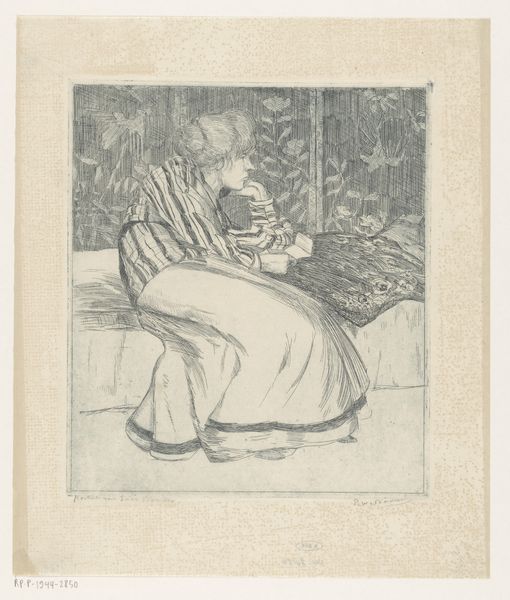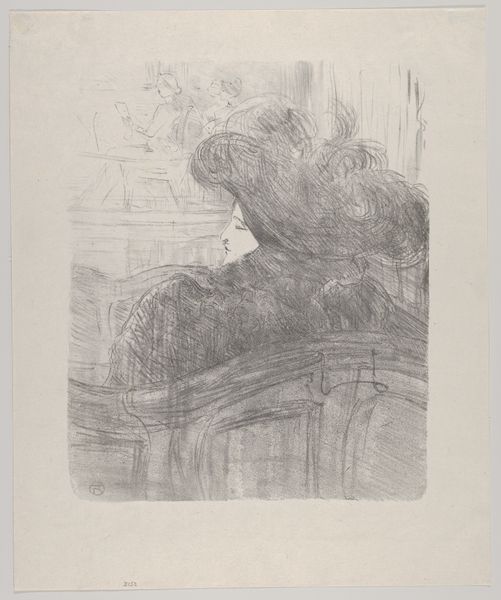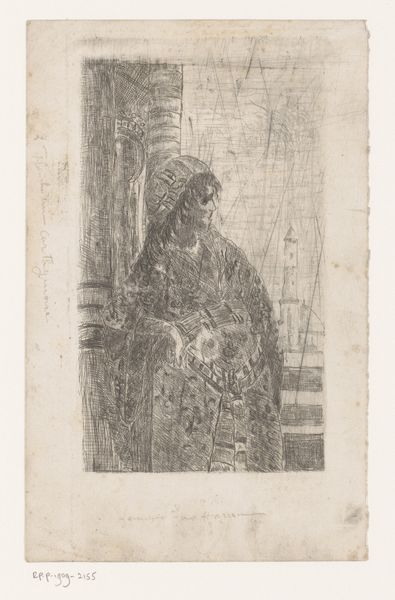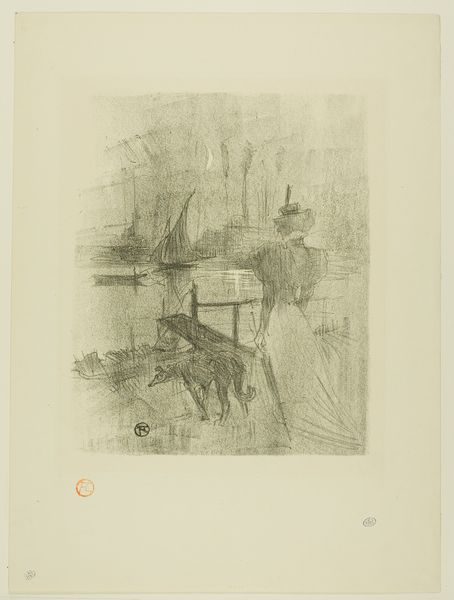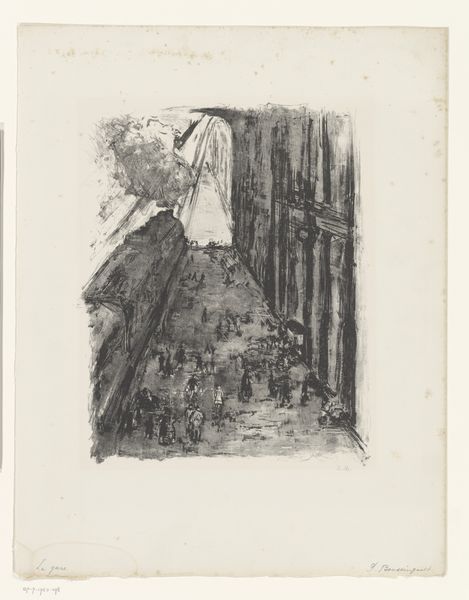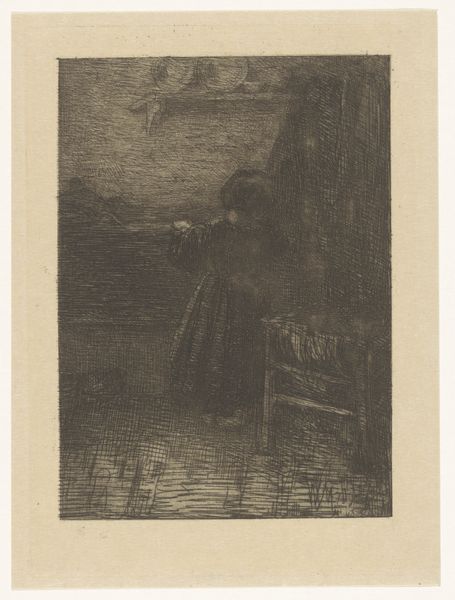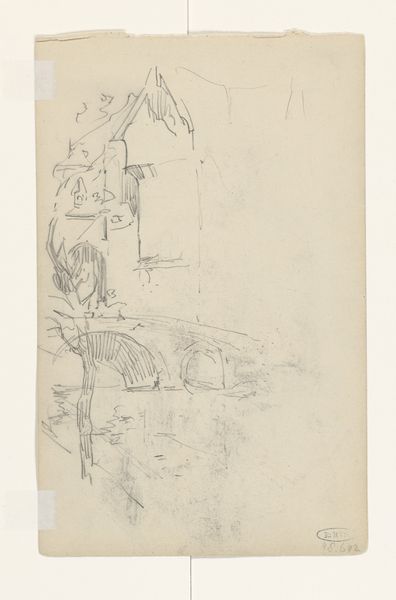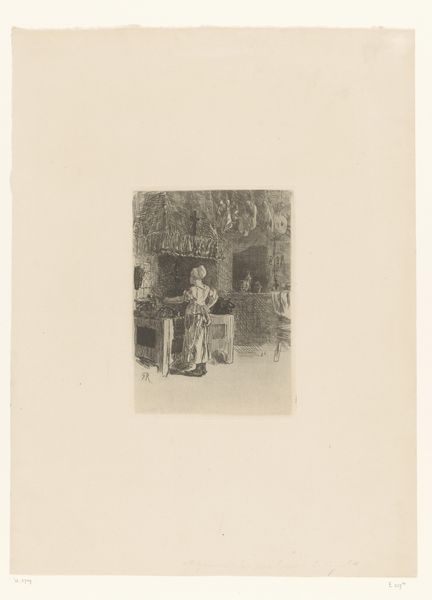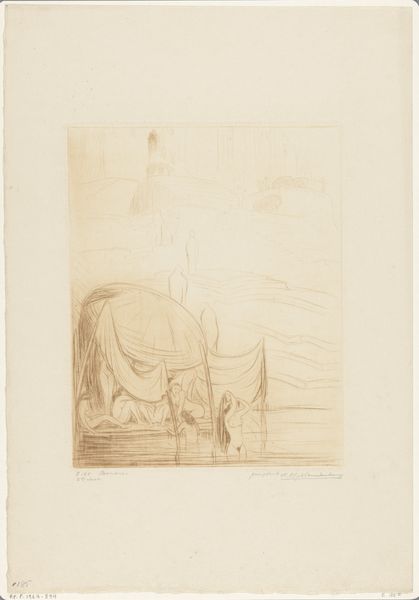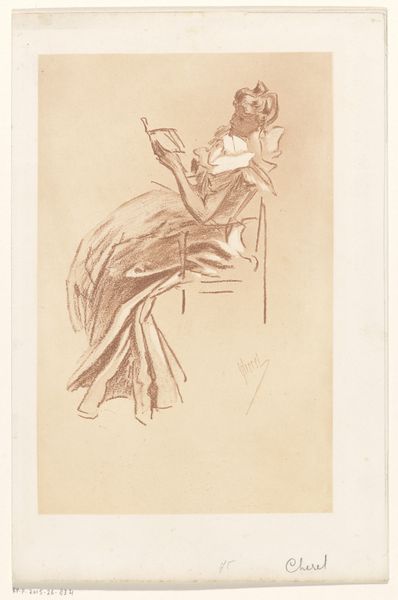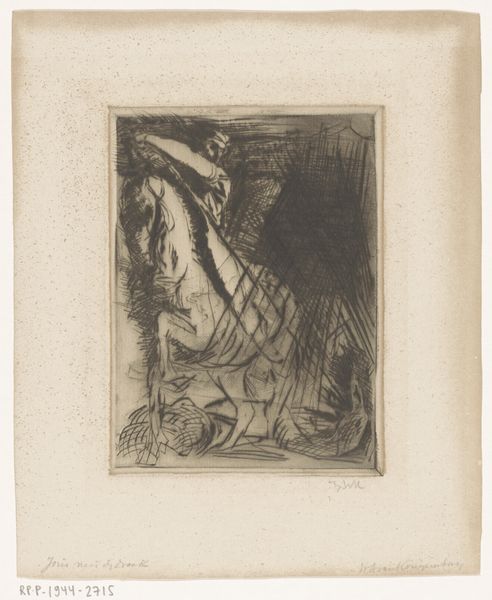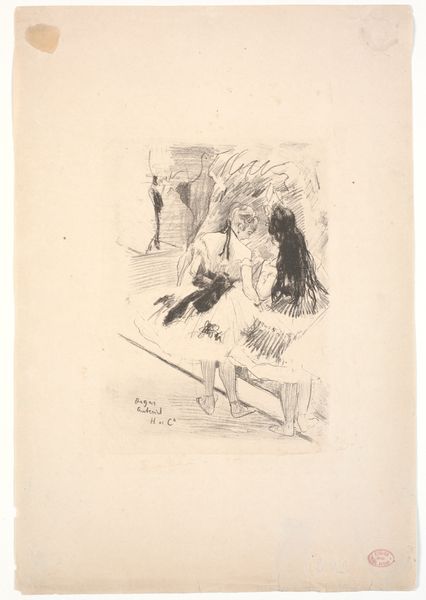
Badende en wassende vrouwen aan de oever van de Ganges in Benares 1916 - 1919
0:00
0:00
drawing, paper, pencil
#
drawing
#
pencil sketch
#
landscape
#
figuration
#
paper
#
pencil
#
orientalism
#
watercolour illustration
#
genre-painting
#
watercolor
Dimensions: height 248 mm, width 198 mm
Copyright: Rijks Museum: Open Domain
Curator: Let’s spend a moment with Wijnand Otto Jan Nieuwenkamp's drawing, “Bathers and Washing Women on the Banks of the Ganges in Benares,” created sometime between 1916 and 1919. It's rendered primarily in pencil on paper. What strikes you immediately? Editor: There's a certain… haziness to it, almost like a memory half-forgotten. It's as if I'm peering through a heat shimmer at this bustling scene on the Ganges, women bathing, doing laundry... life happening right there. The linework is so delicate. Curator: Absolutely. Nieuwenkamp was deeply interested in the material realities of different cultures. Here, it's fascinating to consider the socio-economic context. The drawing depicts a communal space, the riverbank as a site of both ritual and daily labor. The paper and pencil he uses are relatively humble materials, making this high subject available in democratic medium. Editor: Right, and it isn’t a typical orientalist painting dripping with idealized exoticism. It feels like the artist captured something… real. And the way he's massed those figures, creating that almost fluid connection between bodies and water… it’s masterful, that feeling of shimmering bodies emerging from the holy river. Is this orientalism, exactly, or is something else going on? Curator: That's a key question. We have to acknowledge the orientalist gaze inherent in a European artist depicting South Asian life. Yet, Nieuwenkamp lived extensively in the Dutch East Indies and demonstrated a keen interest in the everyday lives and labor of the people he encountered. The figures are not romanticized; we are viewing bodies at work, at rest, interacting with one another and with their surroundings in a real, observable fashion. Editor: You’re so right! The figures certainly convey a lack of artifice. Still, there is that pervasive haze of a Western gaze impacting all of this. Perhaps that haze helps add the distance needed to make an aesthetic observation? I am, though, deeply drawn to it. I keep circling back to that feeling of a faded, loved photograph. Curator: And there's an entire discussion to be had on how those colonial relationships funded and shaped the very production and distribution of these images, impacting perceptions both then and now... Editor: True! Well, I’ll be thinking about Nieuwenkamp’s “Bathers” for quite some time. Thank you for pulling back those layers of context! Curator: My pleasure. Hopefully it inspires you to explore the complex material and cultural conditions that shape artistic representations.
Comments
No comments
Be the first to comment and join the conversation on the ultimate creative platform.
